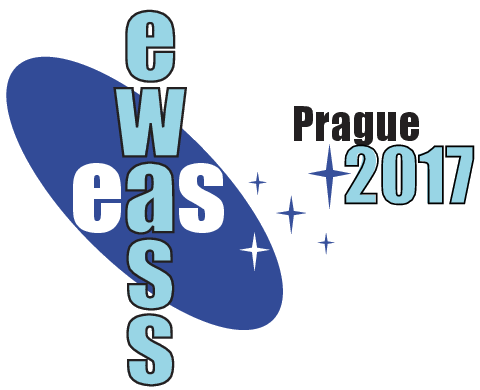Symposium S16
29 – 30 June 2017
Science with a large cooled FIR Space Observatory
Aims and scope
The FIR spectral region, which uniquely enables studies of the thermal dust continuum emission and key atomic and molecular cooling and diagnosis lines, provides answers to core questions, deeply rooted in modern astrophysics and planetary science, such as:
- What processes control the formation and evolution of stars, planetary systems and galaxies?
- How has the chemical composition of the Universe evolved from primordial gas to habitable planets?
- What is the life cycle of water from the interstellar medium to planetary systems?
- What are the characteristics of the small Solar System bodies, such as comets and TNOs, containing record of the processes that shaped our Solar System and made the Earth habitable?
The successful missions like Spitzer and Herschel have shown the indispensable role of FIR observations to address above questions. At the moment this is being demonstrated by the complementarity of the Herschel data with ALMA and will become more explicit once the JWST starts operations.
At the successful symposium at EWASS 2016, named ?Future Prospects for the Far-Infrared Space Astrophysics?, it was realized that there are in principle two specific directions to go forward with a future FIR mission. These two options are 1) a number of FIR antennas operating in an interferometric mode and 2) a large single dish, with a collecting area about one order of magnitude larger than the Herschel telescope.
The science and technology for the first option has been addressed in the EU FP7 project FISICA. See http://www.fp7-.?fisica.eu/. It was recognized that acceptable image quality and good sensitivity would require a large number of antennas. In particular this is the case for extragalactic studies. Therefore the second option, a large actively cooled single dish, seemed to be the most logical next step for a FIR mission.
The objective of this EWASS symposium is to discuss and evaluate the scientific rationale for a future FIR single-dish mission and offer the opportunity to the wide European astronomical community to participate and and present their ideas with priorities.
The output is aimed to be the European FIR Community input for future FIR missions of ESA and national space agencies, as well as input for our colleagues in the US decadal review.
Programme
- Early Universe
- Galaxy Formation and Evolution
- Cosmology
- ISM, Planet and Star Formation
- Solar Systems
- Stellar Evolution
- Far-infrared space technologies (posters only)
- Current and future far-infrared space facilities
-
- Panel discussion
-
Invited speakers
Confirmed Invited Speakers:
Philippe André (CEA, Fr), Andrey Baryshev (Kapteyn Inst., Nl), Francois Boulanger (IAS, Fr), Karina Caputi (Kapteyn Inst., Nl), Leen Decin (Leuven, B), David Elbaz (CEA, Fr) , Paul Hartogh (MPS-MPG, D), Michiel Hogerheijde (Leiden, Nl), Sergio Molinari (IAPS-INAF, It), Goran Pilbratt (ESA, Nl), Sergey Pilipenko (ASC-LPI, Russia)
Scientific organisers
Thijs de Graauw (ESO/IAG-USP/ASC-LPI, Chile) Chair, Susanne Aalto (Chalmers, Sw) Co-chair, Pepe Cernicharo (CSIC, Sp), Leen Decin (Leuven, B), Paul Hartogh (MPS, Germany), Frank Helmich (SRON, Nl), Pavel Jachym, (AI, Cz), Darek Lis (LERMA, Fr), Karl Menten (MPfR , D), Sergio Molinari (IFSI, It), Sergey Pilipenko (ASC-LPI, R), Ryszard Szczerba, (CAC, Pld)
Contact
Thijs de Graauw (tdegraau @ alma.cl), Susanne Aalto (susanne.aalto @ chalmers.se)
Updated on Thu Feb 16 01:30:23 CET 2017
|

 A power cut will shut down all EAS services on Tuesday, 10 January 2017 starting at 7:30 CET.
A power cut will shut down all EAS services on Tuesday, 10 January 2017 starting at 7:30 CET.




















